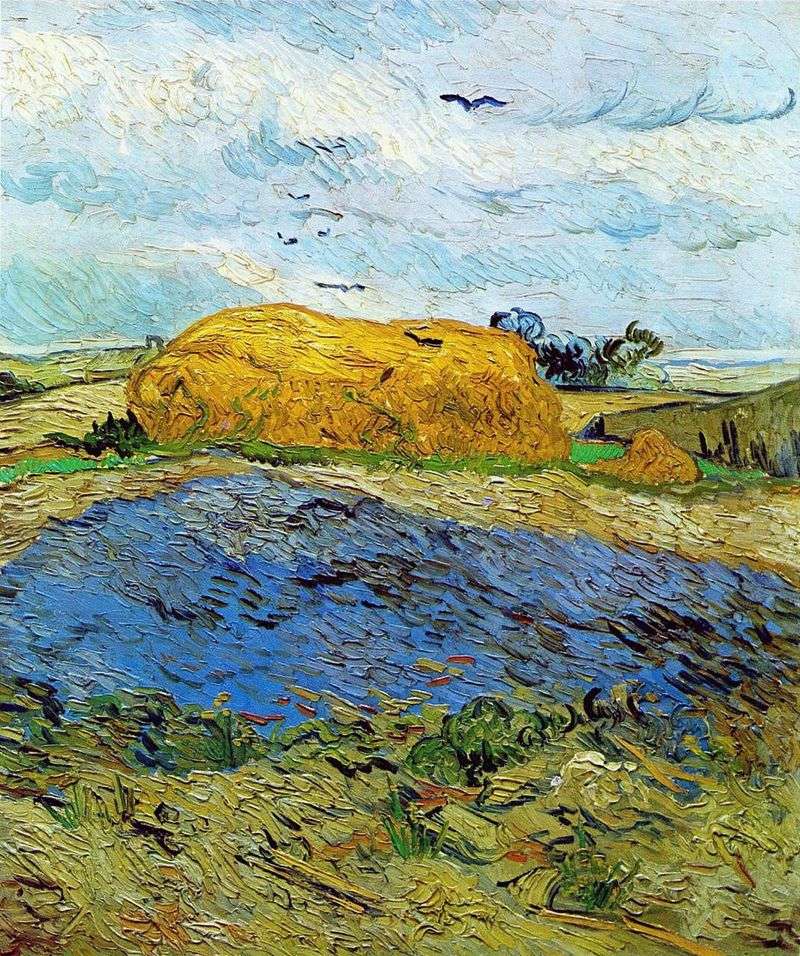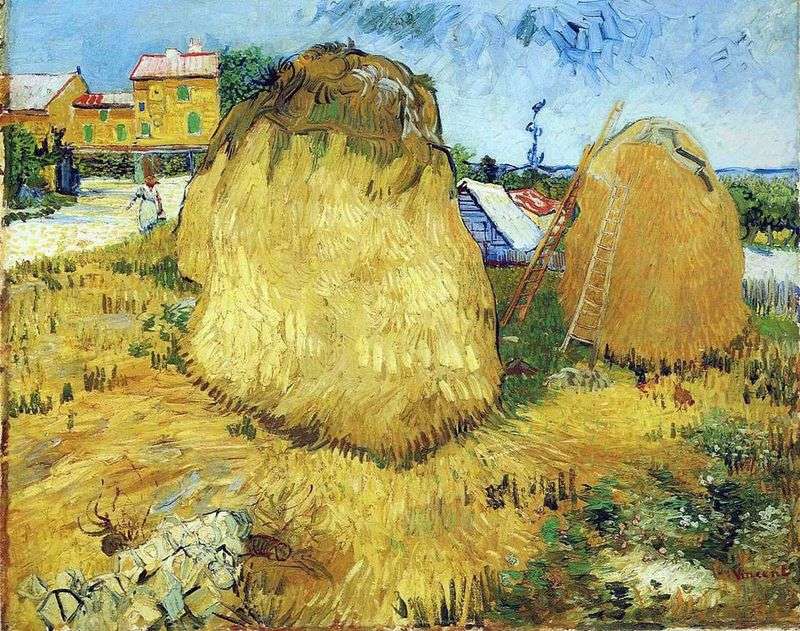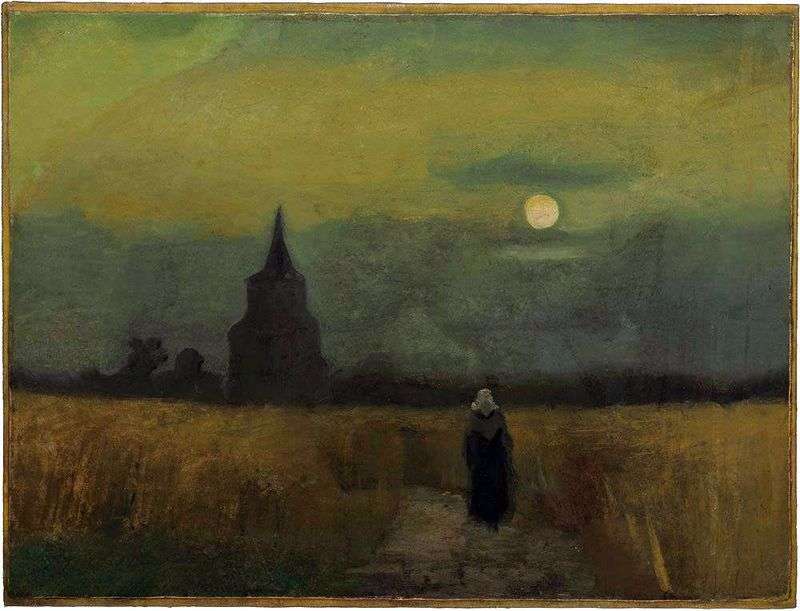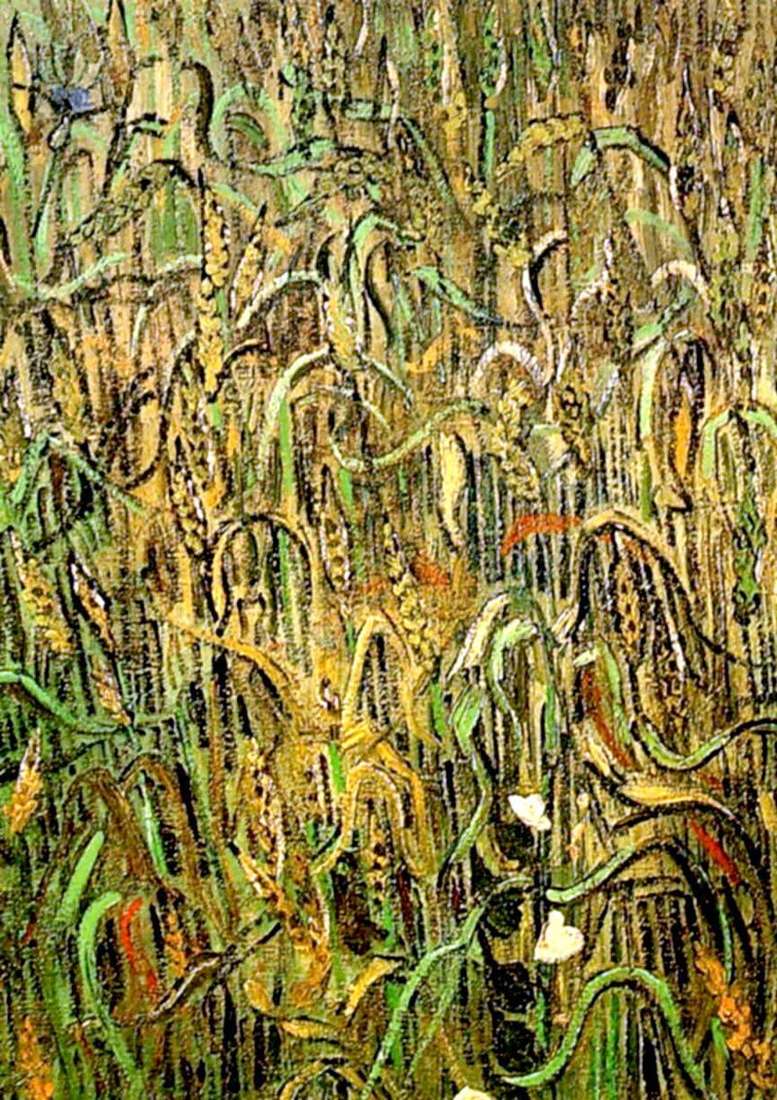
Van Gogh often painted a stack of wheat. In his work, they are a symbol of the infinity of life, are the result and proof of the continuous frequency of natural processes.
However, in the last period of the artist’s life all his work begins to undergo changes. He continues to address his favorite topics, but sometimes they have a tinge of anxious and gloomy forebodings. In this picture, performed shortly before his death, Van Gogh depicts a haystack in a field not far from Over. Under the onslaught of rain, it becomes formless and seems to lose its life. It is surrounded by a flock of black crows coming down from the sky.
Due to lack of perspective, the land becomes slippery and unreliable sloping plane, and the entire foreground occupies a large and seemingly bottomless puddle, painted with dense smears of blue and black paint. Twists of colorless clouds hang low over the ground, and the whole picture is filled with a feeling of hopelessness and insecurity.
The color scheme of the picture, based on a combination of living contrasting colors, looks harmonious. However, the disorderly manner of superposition of the trembling pastoral smears brings a shade of nervousness and confusion.
 Haystacks in Provence by Vincent Van Gogh
Haystacks in Provence by Vincent Van Gogh Seeder by Vincent Van Gogh
Seeder by Vincent Van Gogh Wheatfield with Crows by Vincent Van Gogh
Wheatfield with Crows by Vincent Van Gogh The Sower by Vincent Van Gogh
The Sower by Vincent Van Gogh Crows in a wheat field (Wheat field with crows) by Vincent Van Gogh
Crows in a wheat field (Wheat field with crows) by Vincent Van Gogh The old tower among the fields by Vincent Van Gogh
The old tower among the fields by Vincent Van Gogh Wheat ears by Vincent Van Gogh
Wheat ears by Vincent Van Gogh Wheat Field by Vincent Van Gogh
Wheat Field by Vincent Van Gogh